They growl at empty rooms. They bolt at shadows. And across history, animals have been called spirit sensors, grief-guides, and watchers at the veil.

It’s 2 a.m. Your dog growls at an empty corner. Your cat’s pupils go wide—and she bolts from the room. You’re not imagining it. Animals notice things we don’t. For centuries, people have wondered: Can they see what we can’t?
Science says animals have sharper senses—vision, hearing, smell—and folklore says they’re guardians, messengers, and mediums in fur. So what’s really going on when your pet stares into space? Let’s look at what research reveals… and what generations of ghost-watchers already believed.
1. Dogs Can Hear Things We Can’t—Literally

Dogs have long been thought of as protectors between worlds—and science gives that theory some teeth. Canines can hear frequencies up to 65,000 Hz (humans max out around 20,000), and their ability to detect subtle motion, heart rate changes, and ultrasonic sounds means they pick up on things we miss entirely. According to the American Kennel Club, they’re especially good at reading environmental shifts—and our moods.
But folklore goes further. In Celtic and Nordic mythology, dogs howled to warn of approaching spirits. Ancient Chinese households kept black dogs as spiritual protection. Even today, paranormal investigators often bring dogs to haunted sites, watching for growling, pacing, or refusal to enter certain rooms. Whether they’re sensing old pipes, ghostly drafts, or something we can’t explain, dogs have a long history of saying, “Something’s not right here”—long before we know why.
2. Cats Have a Long History of Seeing the Unseen
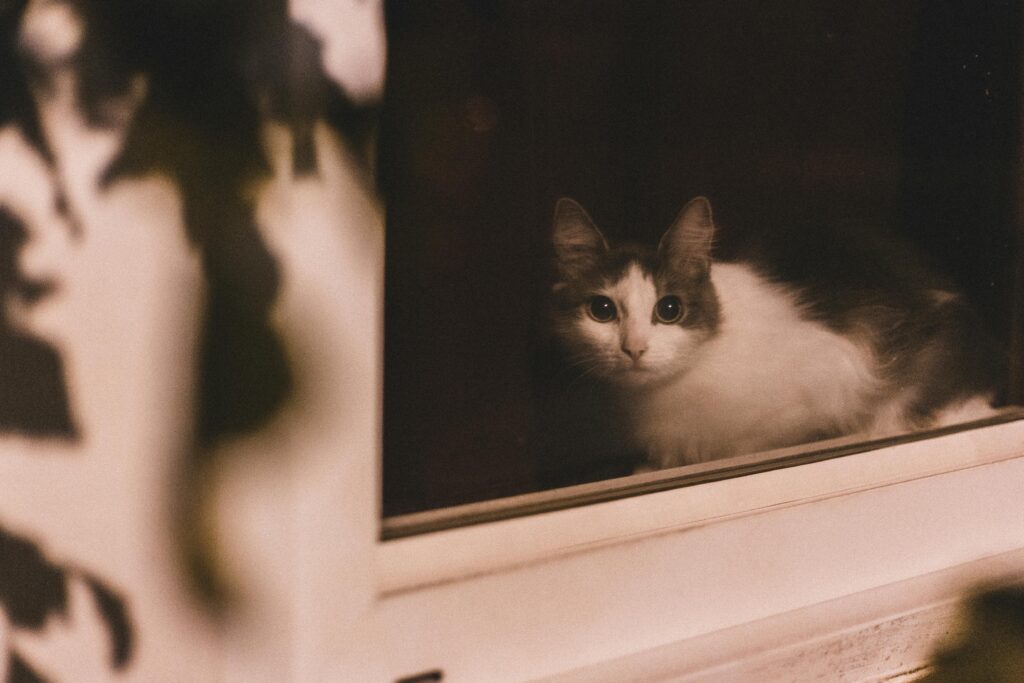
If your cat suddenly hisses, bolts, or stares—unblinking—at a corner of the room, you’re not alone. Cats see in near darkness, detect subtle air currents, and are hardwired to monitor micro-movements. They also track sound ranges we can’t hear, making their reactions seem supernatural. But in ancient belief systems, these skills weren’t just practical—they were sacred. In ancient Egyptian culture, cats were thought to protect the home from evil, both seen and unseen.
Many Eastern European folktales claimed cats could sense if a space was spiritually dangerous. In Filipino lore, cats are said to detect the presence of the aswang—a shape-shifting spirit that preys on the living. If a cat meows or won’t settle in a certain room, older generations often take it as a warning. Whether you believe they’re channeling intuition or chasing shadows, there’s something timeless about a cat’s ability to make us stop and stare at nothing—just in case it’s something.
3. Horses, Cows, and Farm Animals Sense Death
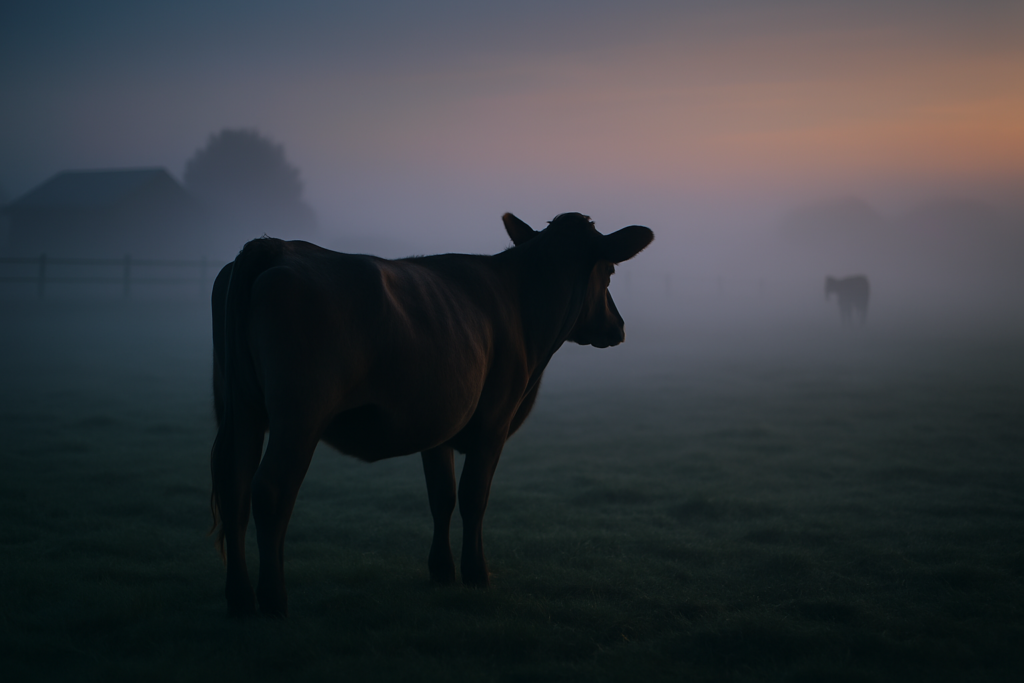
Livestock might seem too earthy for ghost stories, but rural lore says otherwise. Generations of farmers have reported strange animal behavior before death or disaster. Horses panic at unseen threats. Chickens go silent before a death. Cows low into the night and refuse to be milked. What sounds like superstition tracks with science: herd animals are biologically wired to detect stress cues, including pheromones and cortisol spikes from both humans and each other.
But the eerie part is their connection to death—not just fear. In parts of Ireland and Appalachia, it was believed that cows could “low for the dead” or even signal a soul’s departure. In Japan, it’s believed that animals can see the spirits of ancestors returning during Obon season—and that livestock grow uneasy during that time. Whether their reactions are instinctive or intuitive, these creatures have become death’s early messengers across cultures.
4. Elephants and Ravens Mourn Their Dead
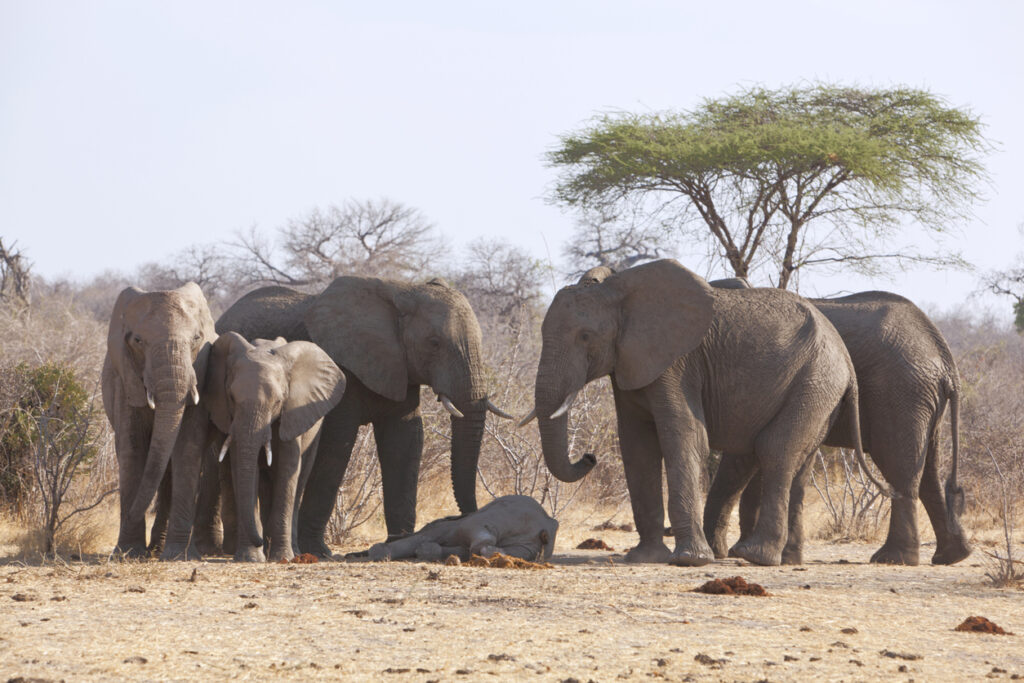
If animals can grieve, can they also perceive something lingering? Elephants have been observed returning to the bones of their dead, caressing them with their trunks and standing silently for hours—a behavior documented in both field studies and cognition research. Ravens and crows, known for their intelligence, have also been seen holding what appear to be funerals, gathering in silence around their fallen. As National Geographic explains, these rituals may help them learn about danger or even express social grief.
In Tibetan lore, ravens are said to escort souls from one world to the next. In India, elephants are seen as spirit-crossers, capable of walking between dimensions. Some Indigenous North American cultures believe crows are messengers for the departed, returning with whispers and warnings. If mourning exists in the animal world, then so too might memory—and perhaps something more. When animals revisit a place of loss, are they grieving the absence or acknowledging a continued presence?
5. Earthquakes, Ghosts, or Something Else?
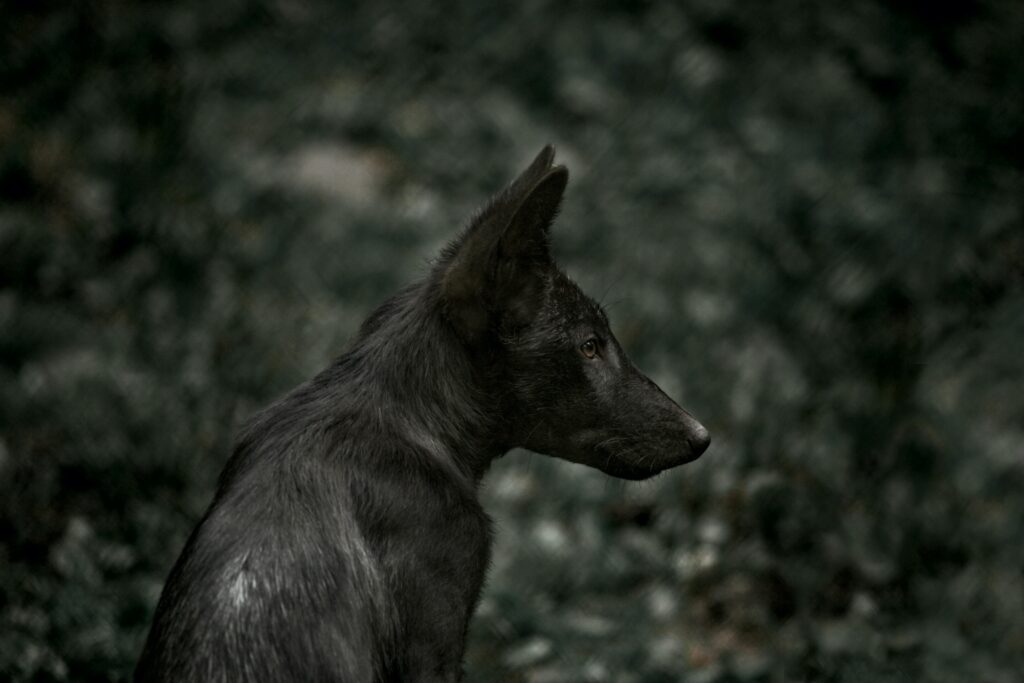
Animals are famous for acting up before natural disasters. Dogs bark, cats hide, and birds flee. One theory is that they’re detecting electromagnetic shifts or subtle ground tremors. But what if those reactions sometimes overlap with paranormal perception? Some scientists believe that animals can sense EMF changes—the same energy fluctuations ghost hunters track with EMF meters in haunted spaces.
In Japanese folklore, cats and dogs were said to alert households to yokai (spirits), often minutes before anything could be seen or felt. Paranormal investigators often report that when EMF fields spike—especially in the absence of electronics—animals become visibly distressed. If ghosts do influence energy, it makes sense that animals would respond. And what if both animals and machines are reacting? That’s when the room gets colder—and quieter.
6. Birds as Messengers from Beyond
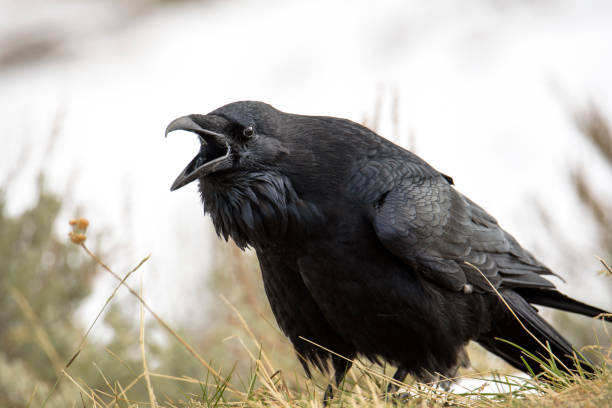
Across cultures, birds are seen as soul guides. In Celtic myth, ravens were linked to the battlefield and the afterlife. In Egyptian art, sparrows carried prayers to the heavens. In modern times, many people report the sudden, repeated appearance of a bird after a loved one dies—usually at windows, on balconies, or circling the home. It’s so common that it’s now part of our shared language: “A cardinal came to visit me.”
Scientists at Cornell University acknowledge that birds are highly responsive to emotional energy, light shifts, and even scent particles we can’t detect. In Polynesian traditions, a bird flying into the home is said to carry the soul of an ancestor. In Appalachian folklore, a bird tapping on glass was a death omen. Whether their behavior is symbolic or sensory, birds tend to appear right when we’re most open to meaning.
7. Pets Visiting After They Die

Ask any longtime pet owner, and they’ll likely tell you: animals don’t always say goodbye for good. Many report hearing their dog’s nails on the floor, feeling a cat’s weight at the end of the bed, or dreaming so vividly of a lost companion that it feels like a real reunion. According to Psychology Today, these sensory experiences are not only common—they’re deeply comforting.
In Japanese folklore, inu no rei (spirit dogs) are said to protect their humans long after death. In Latin America, it’s believed that pets walk alongside their owners into the afterlife—and may return briefly to offer comfort. In one documented hospice case, a patient claimed her cat visited her in dreams nightly for a week before passing—each time lying on her chest like it used to. Whether that’s spirit, memory, or something we can’t explain, the bond between animals and humans doesn’t always end at the grave.
8. The Science Can’t Explain It All—Yet

We know animals sense more than we do. Their brains are tuned to frequencies, heartbeats, and subtle environmental shifts we can’t detect. They react to barometric pressure, electromagnetic fields, and even emotional spikes—and researchers studying EMF activity in both natural disasters and paranormal hotspots believe animals may be sensing similar shifts. But even with all that tech and science, there’s something more.
Folklore offers context. Ritual explains. But behavior—like a dog growling at an empty stairwell or a horse refusing to enter a room where someone has died—doesn’t always line up neatly with what we know. Sometimes, science lags behind experience. And when it comes to what our animals sense? Maybe it’s not just ghosts. Maybe it’s a fuller view of reality—one we’re just not built to see.
Final Thought: Maybe They’re Not Seeing Ghosts—Maybe They’re Just Seeing More Than We Can

You don’t have to believe in ghosts to believe animals know more than we do. Whether they’re sensing electromagnetic fields, reacting to subtle biological cues, or catching glimpses of something beyond, their reactions are real—and often unsettling. Science is still catching up, but folklore has always known: when your pet growls at an empty hallway, maybe you should listen.
Because the world isn’t just what we see. Sometimes, it’s what our animals sense—and what we feel deep down but don’t quite have words for.


